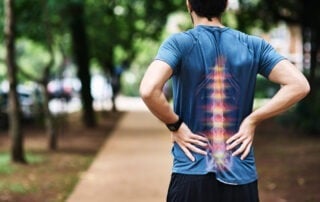
Have you heard the saying “Sitting is the new smoking” and wondered what the saying really means? Sitting for long periods, or remaining generally inactive has been found to have a significant impact on physical and mental health, as smoking has been found to have. Our bodies need activity and movement! So what do you do? Stay Active! As the old adage says, “Move it or Lose it!”
Regular exercise can help you control your weight, reduce your risk of heart disease and strengthen your bones and muscles. What’s not to love about that? Doing anything you can to stay active in your home, in your community or at a fitness center all year round are great ways to reap these benefits of exercise.
Some great guidelines to follow for getting the right amount of exercise…
- The Department of Health and Human Services (DHHS) recommends that healthy adults include aerobic exercise and strength training into their fitness plans
- DHHS recommends at least 150 minutes of moderate aerobic activity per week
- Strength training exercises at least 2x/week
- Stretching is also important to keep muscles long and flexible, to keep joints mobile and to help maintain or even increase their range of motion.
What are the benefits of incorporating Aquatic Exercise into your fitness plan this summer? Water has 3 main properties that make it a great medium for exercise: Buoyancy, Viscosity and Hydrostatic Pressure.
Buoyancy
Buoyancy or flotation acts in the opposite direction as gravity. When you are in water up to your waist 50% of your body weight is floating, at chest level you become 30% weight bearing through your lower joints and at neck level 10% weight-bearing. This means if you weigh 200 pounds and you are in water up to your neck; your spine and lower extremity joints only experience 20 pounds of weight-bearing stress which is great for those arthritic joints. It will be easier to move and perform exercises in the water, but at the same time, it adds to a greater tendency to float away. So be careful when first getting into deep water.
Viscosity
Viscosity is the resistance to movement through the water. Water has a 790 times greater resistance than air which makes moving through the water more difficult. Water also has a three-dimensional resistance as it works muscles in both directions whether it be forward and backward or up and down. Viscosity also is directly related to the speed of movement. The faster you move through the water the harder it is to move through the water. This is great for muscle strengthening.
Hydrostatic Pressure
Hydrostatic (or water) pressure is the pressure exerted by water on a body at rest. At the surface: water pressure is 14.7 pounds per square inch (psi) and increases by .433 psi for each foot of depth in the water. A person standing in water at neck level will experience a pressure of 16.43 psi at the calf. A typical Ace bandage only supplies 1-7 psi of compression depending on how tightly it is wrapped. This is great to help reduce fluid retention or swelling in the lower extremities.
Most individuals would benefit greatly from an aquatic exercise program at any phase in their rehabilitative, weight loss or general fitness regime. Aquatic therapy can be applied to and used by everyone to promote muscle, bone, joint, cardiovascular and neurological involvement. All of this being said It is always best to seek your physician’s approval to use the pool as a means to exercise. There are some reasons you should incorporate aquatic exercise into your fitness plan, such as: fear of water, severe weakness, open wounds, skin irritation or rash, or frequent or susceptibility to urinary tract infections.
Keep Reading…
Your Relationship With Food | A Guest Blog by Emily Tills, MS RDN CDN of Nourished With Emily
Welcome to our guest blogger, Emily Tills, (Registered Dietitian [...]
Guest Blog: Advice from a Registered Dietitian | How Can Nutrition and Lifestyle Changes Improve Heart Health?
Welcome to our guest blogger, Emily Tills, (Registered Dietitian [...]
How To Promote Better Heart Health | 5 Tips From A Physical Therapist
February is American Heart Month, a time dedicated to [...]
The Risks Associated with a Sedentary Lifestyle
In today's world, technology has made our lives easier [...]
The Impact of Self-Care On Your Physical Health
As a physical therapist, I've seen countless patients come [...]
5 Core Exercises For A Healthy Back
A strong core is essential for good posture, balance, [...]






